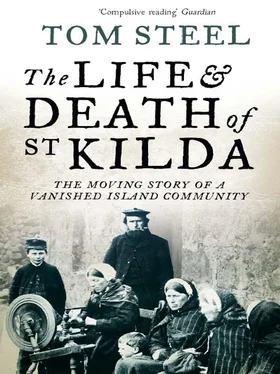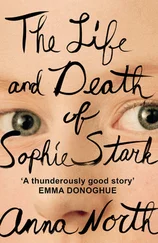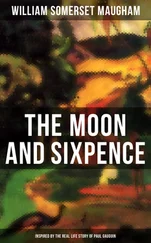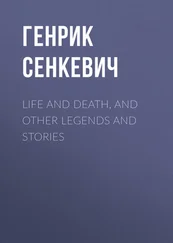The islanders trained their dogs to drive the birds from their burrows. Once they were forced into the open, the puffins were trapped by an ingenious method. The St Kildans laid a length of rope to which were attached anything up to forty little nooses made of horsehair upon a rock or patch of turf that the puffins frequented. The bird would catch its ungainly legs in the noose. The capture of a few would attract the inquisitive attention of others who, by investigating, got caught themselves. It was estimated that using a puffin gin (as it was called) on the slopes and rocks of Dun, an islander could kill fifty puffins a day.
The puffins were plucked and their carcasses split down the middle. They were hung up on strings outside the house to dry and were then ready for the cooking pot. Apart from eating the flesh themselves, the islanders gave it to their dogs and cattle. In the first half of the nineteenth century, between 20,000 and 25,000 puffins were killed every year. By 1876, more puffins were taken in the summer months than all the other birds put together – upwards of 89,000 birds were slaughtered. In later years when the population was smaller, the St Kildans were still catching 10,000 annually.
There was a time when the women and young girls went to Boreray to catch puffins, while the men saw to the sheep on the island. Before the snaring began, a curious rite was performed. A puffin was caught and plucked of all its feathers, save those on its wings and tail. It was then set free and, according to the St Kildans, immediately attracted other puffins around it. Mass slaughter would then begin.
On occasions, the frightened birds were dragged from their burrows by the dogs. ‘While the sagacious animals pawed at one hole,’ wrote Sands who witnessed the harvest in 1877, ‘they (the women) kept a watchful eye on the burrows adjacent as if they expected the puffins to issue from them. Some of the girls at the same time were plunging their hands deep into the holes and dragging out the birds, and twisting their necks with a dexterity which only long practice could give.’
Guillemots were also killed in the spring and summer months. Their flesh was eaten by the islanders and their feathers kept to be exported later in the year. Stac Biorach was their main breeding ground. The stac was nicknamed the ‘Thumb Stac’ because on the needle of rock the only firm hold available was of the size of a thumb.
Apart from the brief three months September to November, the fulmar petrel could be found on Hirta all the year round. The St Kildans ate some adult birds in the early part of the year, but their main concern was to harvest the thousands of young fulmars in mid-August.
Similar in size to the common gull, the female fulmar lays a single white egg towards the end of May. Both parents take it in turn to incubate the egg. After some forty to fifty days the young bird is hatched, and after seven weeks or so is big enough and strong enough to leave the nest. The St Kildans surveyed the cliffs daily from the beginning of August to be sure that they would commence their slaughter before the birds had flown.
The fulmar harvest was the busiest, most exciting and most important incident in the St Kildan year. ‘They catch the birds for the sake of their meat, oil and feathers,’ wrote Norman Heathcote in 1900, ‘and the act of catching them is their only sport. It is this that makes them love their island home. If it were not that they can rival one another on the rocks, they would be less unwilling to seek adventures in the outer world.’
In the weeks prior to the harvest, many preparations had to be made. The women brought the cattle back to Village Bay from their summer grazing in Glean Mor and made sure that they had ground enough corn to feed the family during the harvest period. The men meanwhile got out the old barrels that would be used to store the prepared birds for winter. The salt, used to preserve the birds and normally delivered to the island by the factor in June, was fetched from the storehouse and distributed to each householder. The stomachs of adult gannets caught earlier in the year would be inflated and dried out. They would be used during the slaughter to contain the precious amber oil of the petrels.
The talk at the daily meeting would be of fulmars. The men would discuss and decide what parts of the cliffs should be cleared first. Normally the harvest began where it was agreed the young fulmars were most advanced, for fear that the islanders might lose them forever. The weather was also an important consideration. Some areas of the cliff were notoriously more dangerous in damp or wet conditions than others.
The most important task was to test the ropes. A length of rope taken from the loft of each home was tested by the men in full view of the rest of the community lest it had rotted during the months of storage. The rope was agreed to be safe if it could stand the strain of being pulled by four men against the weight of a large boulder.
On 12 August the harvest began. Everyone on the island took to the cliff tops. The men had ropes slung across their chests and the women carried the empty stomachs of the solan geese. The children accompanied their parents to watch and learn and help the women carry the day’s catch back to the village. Many women were capable of carrying as much as two hundred pounds of dead birds on their shoulders at a time.
In the early days, particularly when St Kildans went off singly to kill birds, an iron stake was hammered into the cliff top to secure one end of the rope while the fowler descended the face. By the nineteenth century such a practice had been done away with. Instead, an islander would fasten the rope round his chest, low enough to allow the maximum freedom of movement. His colleague would hold on to the other end of the rope while a descent was made. The men worked in their bare feet to ensure a firmer grip on the grassy cliffs that plunged a thousand feet into the sea. When the fowler had gained support for his feet, he would shout up to his friend, ‘Leigas!’ (‘Let go!’), at which command the man at the top would slacken the rope. Below, the slaughter could then begin.
On the cliffs of Conachair the fulmars were normally so dense that the fowler had to kill them in order to clear a way for himself along the ledge. Each young fulmar could weigh up to two or three pounds. The man who did the killing wore a belt, and as the birds were strangled, he slipped the head through the gap between the belt and his body. When he had killed twenty or so birds, or had cleared a particular part of the cliff and wished to move on, the bundle of birds was tied to the end of a second rope and pulled up by one of his companions at the top. ‘And then maybe you go to another place’, recalls Lachlan Macdonald, ‘and do the same and then you maybe take thirty or forty of them on your back home. It’s pretty heavy sometimes. Hard work in a way.’ As little time as possible was spent in the actual killing of birds, and with the call of ‘Tarning nard’ (‘Pull up’), the fowler would be pulled up to the top of the cliff and safety.
Occasionally the thirty-fathom ropes that the St Kildans used would not be long enough to reach the lower parts of the cliffs. In such instances, three men would work together. The first would stay at the top, as before, and the other two would be lowered down one at a time. The second man, having found a secure platform, would then lower the third down to a position from which he could continue the slaughter.
The St Kildans always adopted the easiest method of killing the birds. In many parts of the cliffs, ropes were not needed at all as the nests were readily accessible. In other parts, rather than haul the birds up to the cliff top, the islanders tossed them into the sea, where a waiting boat would pick them up.
Читать дальше












